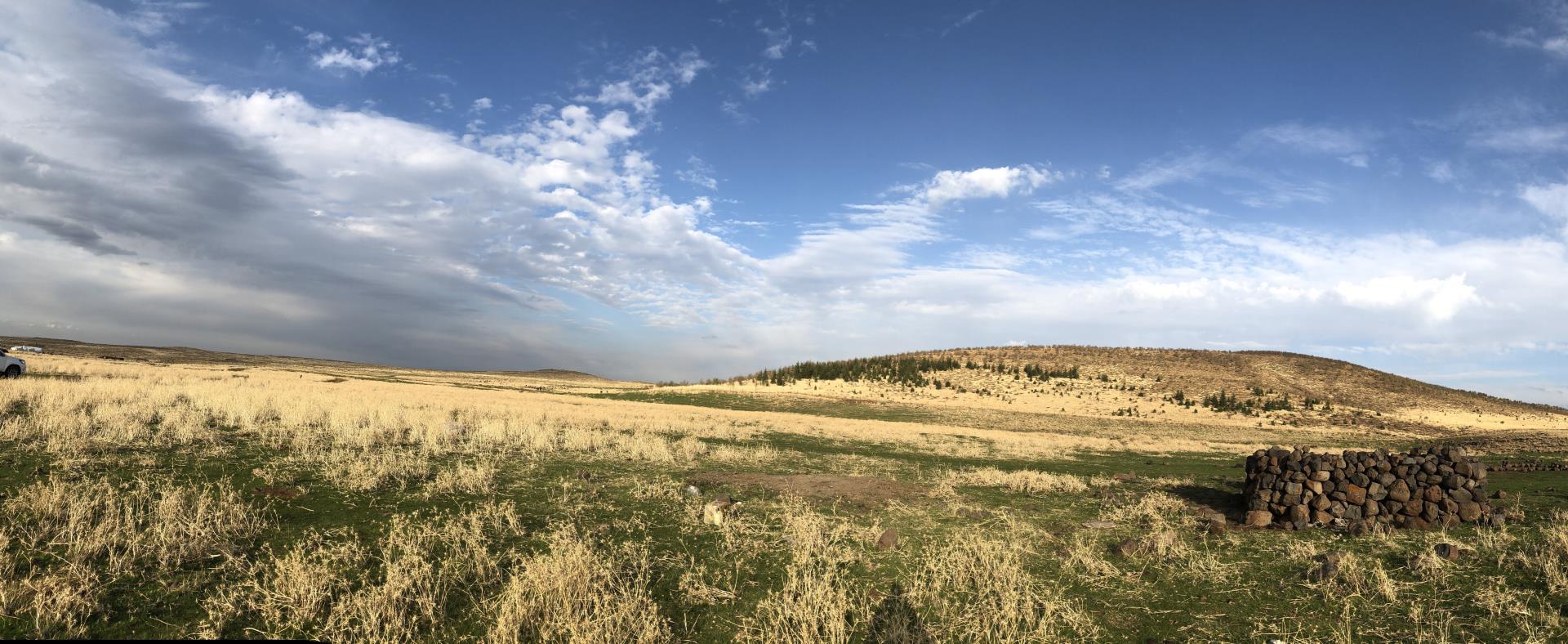New locations of wild grain recorded in the birthplace of modern wheat

Wheat was first cultivated in the Karacadağ Steppes of Anatolia in modern-day Turkey. ©FAO/Nihan Yenilmez Arpa
Wheat is grown on more land area than any other commercial crop in the world, and 765 million tonnes of wheat were cultivated in 2019 to nurture families, feed livestock, and create biofuels. The modern cultivated crop that has driven the arc of the modern world’s development can trace its origins to wild relatives still found in the grasslands and the steppes of Turkey’s Southeastern Anatolia Region, a Vavilov center of origin for wheat.
Even with the long history and profound impact of wheat, there are still more varieties to be found in new locations – even in Turkey.
Knowledge is power
With support from the Global Environment Facility (GEF), the United Nations Food and Agriculture Organization (FAO) and the Turkish Ministry of Agriculture and Forestry’s (MAF) General Directorate of Nature Conservation and National Parks (GDNCNP), General Directorate of Plant Production (GDPP), and General Directorate of Forestry (GDF) have been implementing the Conservation and Sustainable Management of Turkey’s Steppe Ecosystems Project.
The project aims to help protect the biodiversity in some of the last remaining well-preserved steppe ecosystems in Turkey and Europe. An important step to conserving biodiversity is understanding the extent of biodiversity in an ecosystem, and the project surveyed and assessed biodiversity in three distinct grasslands – Kızılkuyu Wildlife Development Area, TekTek Mountains National Park, and the Karacadağ Steppes – to take stock of the rich biodiversity in the steppes.
The baseline surveys on biodiversity recorded the variety of living flora and fauna in the three steppe ecosystems. Out of the 838 taxa – units of biological classification – recorded in the survey, 79 new local records were identified, including six wild relatives of wheat and barley, two of which can only be found in Turkey’s steppe ecosystem.
 Finding and cataloging species of wheat, like triticum boeticum, is the first step in preserving biodiversity in the Turkish steppes. ©FAO/Nihan Yenilmez Arpa and Omur Aybike Yildirim
Finding and cataloging species of wheat, like triticum boeticum, is the first step in preserving biodiversity in the Turkish steppes. ©FAO/Nihan Yenilmez Arpa and Omur Aybike Yildirim
Next steps for biodiversity
After conducting the baseline assessments of biodiversity, the project aims to further improve the conservation of Turkey’s steppe ecosystems by improving the management of protected areas and mainstreaming biodiversity conservation into production landscapes. With a grant of USD 2 328 767 from GEF, which leveraged USD 9.5 million in co-financing, the project will improve the management planning for steppe protected areas, reconcile land use and biodiversity conservation activities, and strengthen the enabling environment for effective ecosystem management, all towards protecting Turkey’s biodiversity in its steppe ecosystems.
Agricultural sectors and the livelihoods they support rely on biodiversity for success, but as populations are growing and changing their consumption habits, the expansion of agriculture is also the largest contributor biodiversity degradation. Mainstreaming biodiversity into agriculture policies and promoting sustainable agriculture practices is a path forward to feeding people, protecting the planet, and achieving the 2030 agenda. By identifying and conserving wild strains of essential crops, FAO and GEF are helping to safeguard food security and biodiversity for generations to come.

Project: Conservation and Sustainable Management of Turkey's Steppe Ecosystems
Press Release: New FAO project protects Turkey’s unique steppe lands, biodiversity

